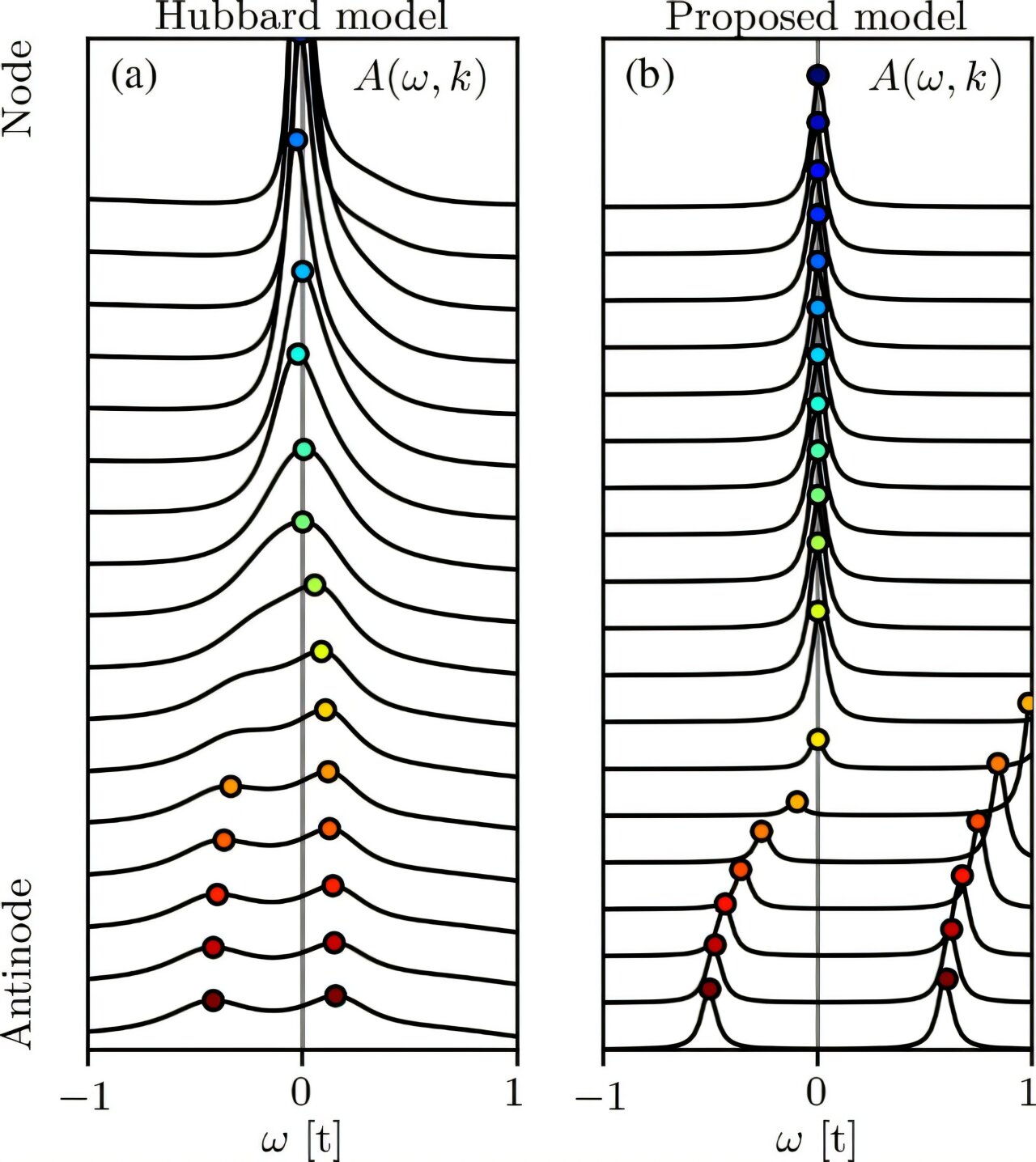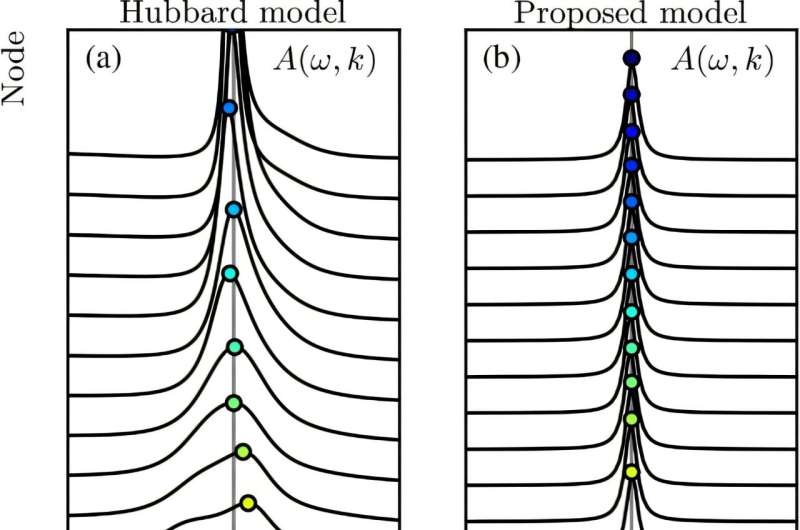

High-temperature superconductivity is one of the great mysteries of modern physics: Some materials conduct electrical current without any resistance—but only at very low temperatures. Finding a material that remains superconducting even at room temperature would spark a technological revolution. People all over the world are therefore working on a better, more comprehensive understanding of such materials.
An important step has now been taken at TU Wien (Vienna). A particularly interesting class of high-temperature superconductors, known as cuprates, exhibit a very surprising effect. Under certain conditions, the electrons in these materials can only move in certain directions. The permitted directions can be visualized as curves, known as Fermi arcs.
These arcs can be visualized with the help of laser light, which specifically knocks electrons out of the material. A team at the Institute of Solid State Physics at TU Wien has now succeeded in developing theoretical and numerical models that explain this effect. It is caused by the magnetic interactions between the electrons of different atoms.
Many unanswered questions about high-temperature superconductivity
Explanations for superconductivity have been around for a long time—the Nobel Prize was awarded back in 1972 for the so-called “BCS theory,” which can be used to mathematically describe superconductivity in metals.
However, this theory fails when it comes to particularly interesting materials that allow superconductivity even at comparatively high temperatures (albeit still quite low by human standards). These materials include cuprates—copper-containing compounds that are among the most researched superconducting materials today.
“Looking at these materials, we come across a whole series of unexplained phenomena that are often closely related,” said Alessandro Toschi, who coordinated the research project together with Karsten Held. One of these phenomena are the “Fermi arcs.”
It is possible to add additional electrons to the high-temperature superconductors and then measure how these electrons move in the material—or to put it from the perspective of quantum physics—which quantum states these electrons can assume.
During such measurements, researchers came across a surprise. “The material only allows certain directions of momentum,” says Matthias Reitner (TU Wien). “This means that the electrons can only move in certain directions.”
The quantum-physically permitted states lie on a curve (a Fermi arc) that ends abruptly at certain points—an extremely atypical behavior that cannot be explained using conventional theoretical models.
Antiferromagnetic chessboard pattern
However, the team at TU Wien—Paul Worm, Matthias Reitner, Karsten Held and Alessandro Toschi—have now succeeded in explaining this surprising behavior theoretically. They developed complex computer simulations as well as an analytical model that describes the phenomenon using a simple formula. The research is published in the journal Physical Review Letters.
“The key to the effect is an antiferromagnetic interaction,” says Reitner. Antiferromagnetism means that the magnetic direction of an atom is preferably aligned in the opposite direction to the neighboring atom.
“In the cuprates that we have modeled, this is an antiferromagnetic interaction with a long range,” says Reitner. “The magnetic moments of the electrons on different atoms therefore align themselves over long distances in such a way that the magnetic orientation of the electrons always alternates between one direction and the other—similar to a chessboard, where each field is colored differently to its direct neighbors.”
The research team was able to show that this magnetic pattern subsequently leads to the strange direction-dependent behavior of the electrons.
“For the first time, we were able to present a theoretical model for the abrupt end of Fermi arcs and explain why the movement of electrons in such materials is only possible in certain directions,” says Worm.
“This advance not only helps us to better understand some of the unsolved mysteries of high-temperature superconductors, but it could also advance future research into materials with similar unconventional properties.”
More information:
Paul Worm et al, Fermi and Luttinger Arcs: Two Concepts, Realized on One Surface, Physical Review Letters (2024). DOI: 10.1103/PhysRevLett.133.166501. On arXiv: DOI: 10.48550/arxiv.2312.17700
Provided by
Vienna University of Technology
Citation:
Superconductivity researchers solve the mystery of Fermi arcs (2024, October 24)
retrieved 24 October 2024
from https://phys.org/news/2024-10-superconductivity-mystery-fermi-arcs.html
This document is subject to copyright. Apart from any fair dealing for the purpose of private study or research, no
part may be reproduced without the written permission. The content is provided for information purposes only.